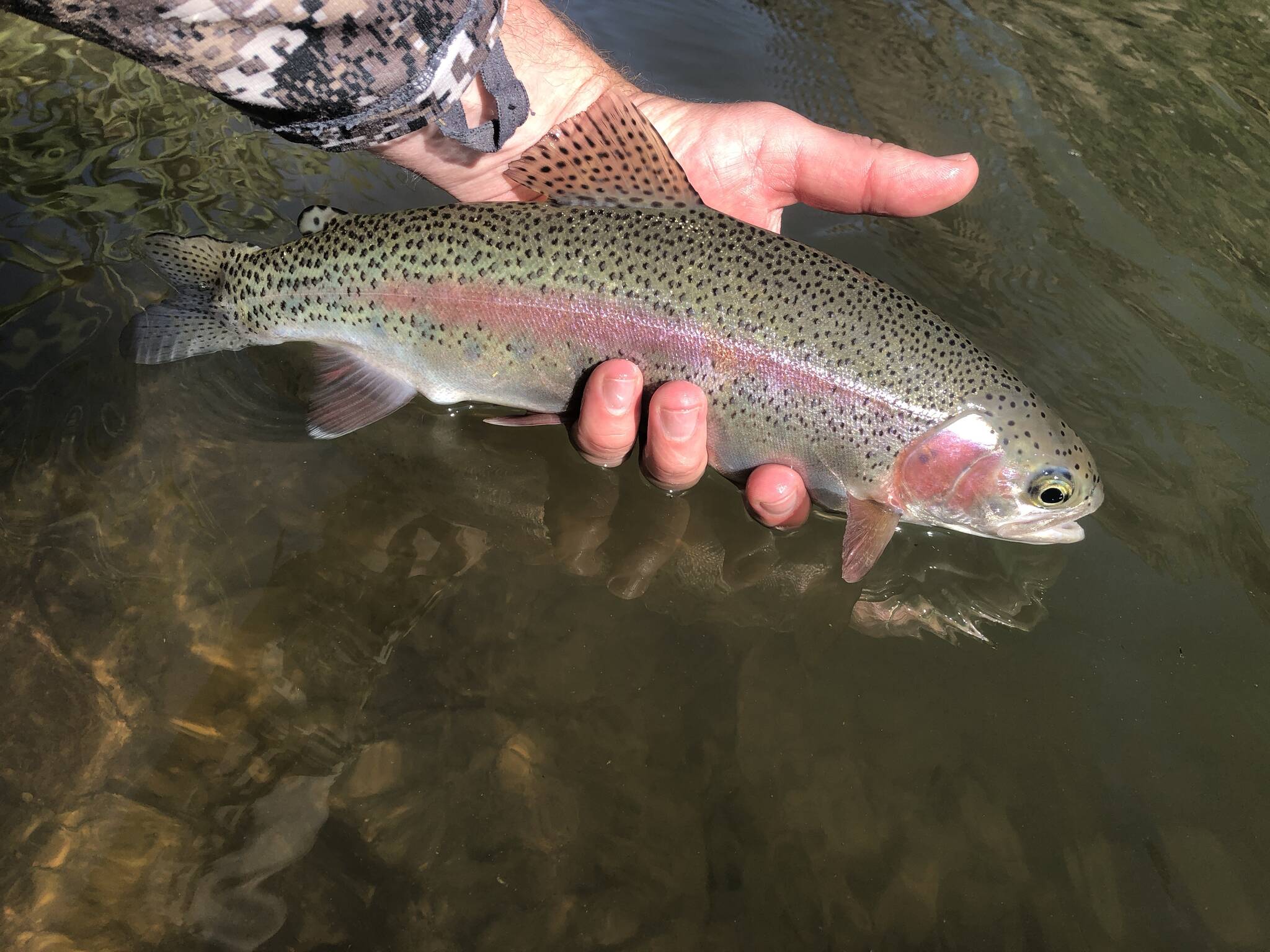The Upper Sacramento River in Northern California is traced by railroad tracks for almost 40 miles. There is a campground that offered access to the tracks and therefore more trout water than we could fish in a summer let alone a weekend.
The program worked something like this: alarm, water, coffee, oatmeal, bar, suit up, walk the tracks, drop down, fish. There were spots we knew and fished often which became a bit of a trap. We’d play the hits, catch some fish and go home. It was a four-hour drive, just far enough to be prohibitive as a weekly habit when you calculate time in the truck vs. time on the water (not to mention gas money).
After a few seasons of routine, I had a good feel for the river. I had learned the lines, which spots to hit during what level of water. The Bend wasn’t worth it when the water was up, but the Bushes were.
One season I was determined to go further. No more auto pilot. The further from camp, the lighter the trails. Maybe at some point, there’d be no trails meaning there could be runs holding trout that people just weren’t willing to access.
I remember standing next to the tracks, fifty or so yards up a rocky slope from the water a mile past my usual access point. There were hours of good water in both directions. I had learned early in my fishing career that it was important to watch the water first. Look for fish rising. Scout the runs, think about the angles. Seeing the water from this perspective allows for better plan making. From elevation, it’s easier to find markers for runs you want to hit, pools that look fishy and places to cross. You see everything for what it is and how it all works together unlike when you’re knee deep in the actual water.
It won’t all go exactly as planned, but attacking the new water with a solid program allows better transitions to the next phase. An angler can choose how much time and energy should be spent on one thing before moving on. There is a level of uncertainty with new water, but it is incredibly empowering to break free of the routine if for no other reason than to test your skill and promote growth.
I read the water and used my vantage to create a general plan and was excited both for the potential for being totally right in my assessments, as well as discovering what I didn’t expect.
I created a small avalanche of rock and dust as I made my way down toward the water. Blackberry vines choked the way in a few spots and grabbed at my hoody and took my hat. There is no delicate way to navigate these vines and sometimes brute force is the only way to break through. There might be blood, but that happens. At one point, shin-level vines tripped me and I smacked my reel on a rock as I fell. But I was through.
The small meadow was an easy reprieve, but more vines guarded the last ten feet before the river. By the time I finally dropped into the water to start my plan my reel had another dent, my hands were poked and I was pretty sure I had forced a thorn through my waders.
But I made it. Further than my previous self was willing to go. Sweaty, bloody and a little frustrated, I stripped line and rolled out my first cast with the fresh hope that only comes with new water.
I’ve found this works with life too.
• Jeff Lund is a freelance writer based in Ketchikan. His book, “A Miserable Paradise: Life in Southeast Alaska,” is available in local bookstores and at Amazon.com. “I Went to the Woods” appears twice per month in the Sports & Outdoors section of the Juneau Empire.

